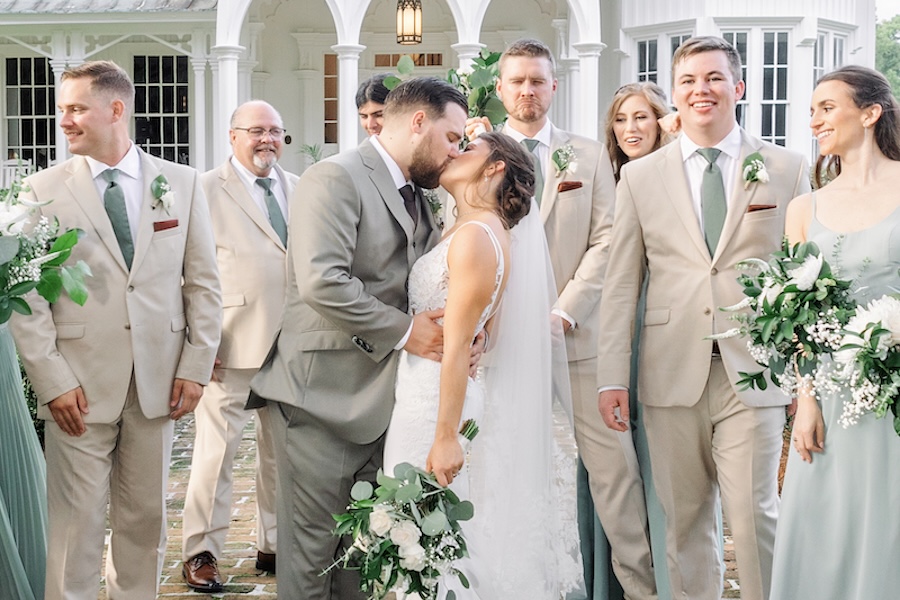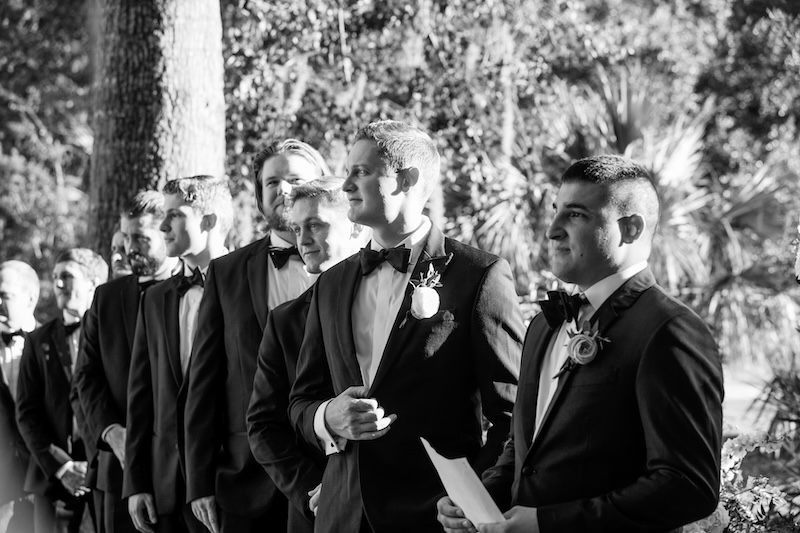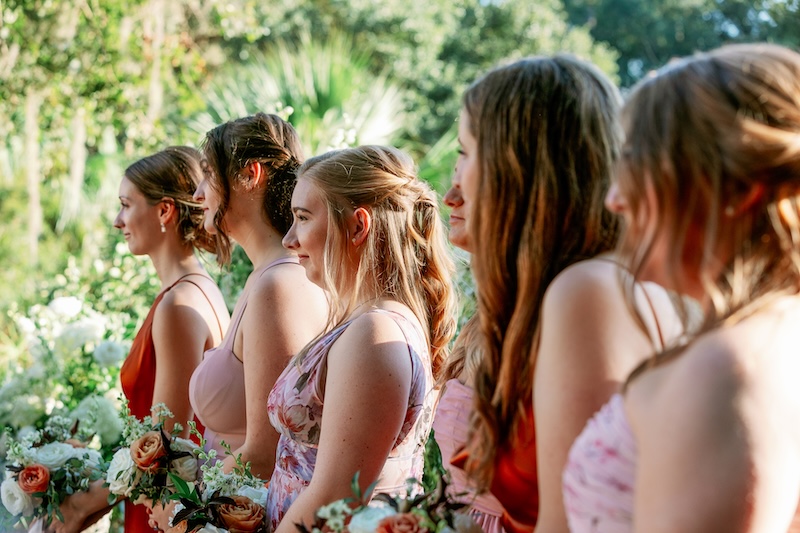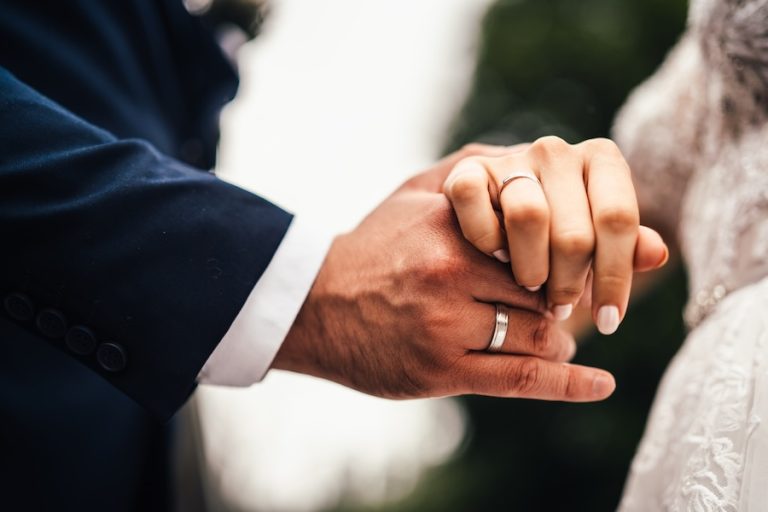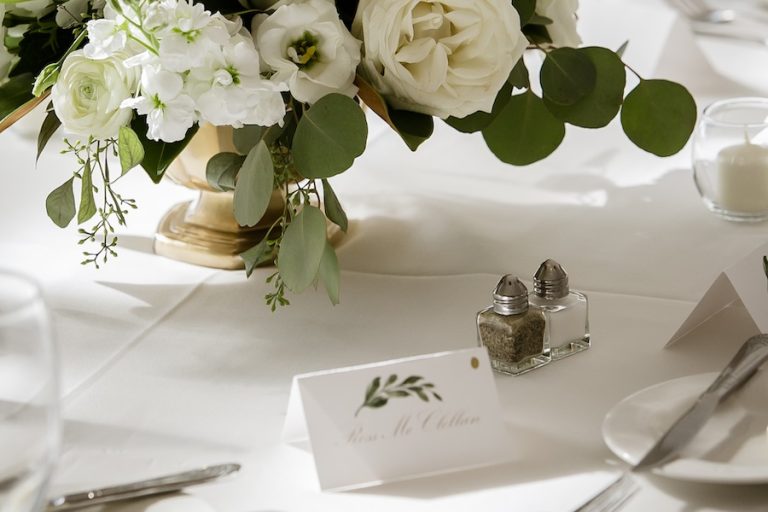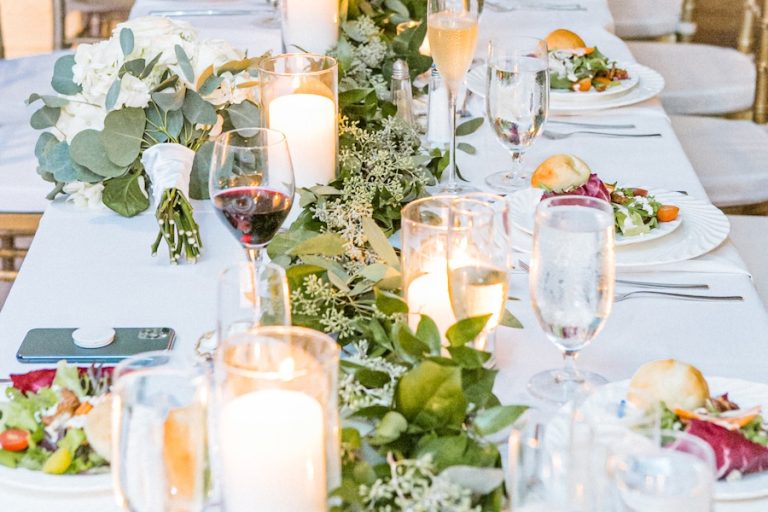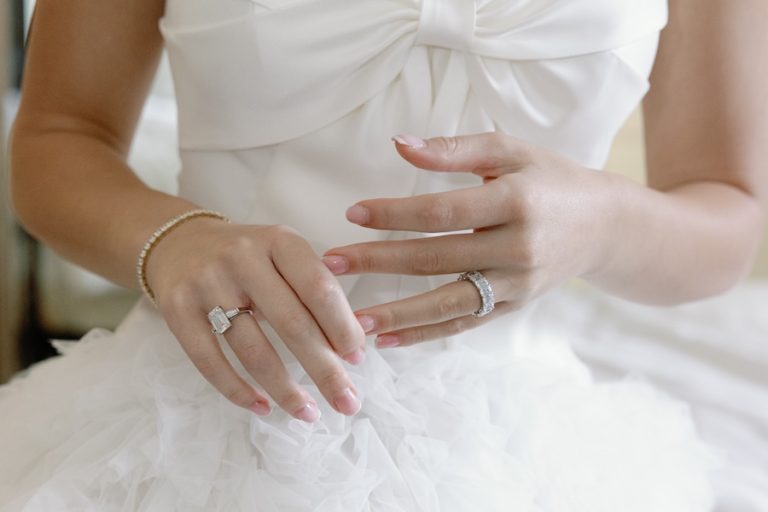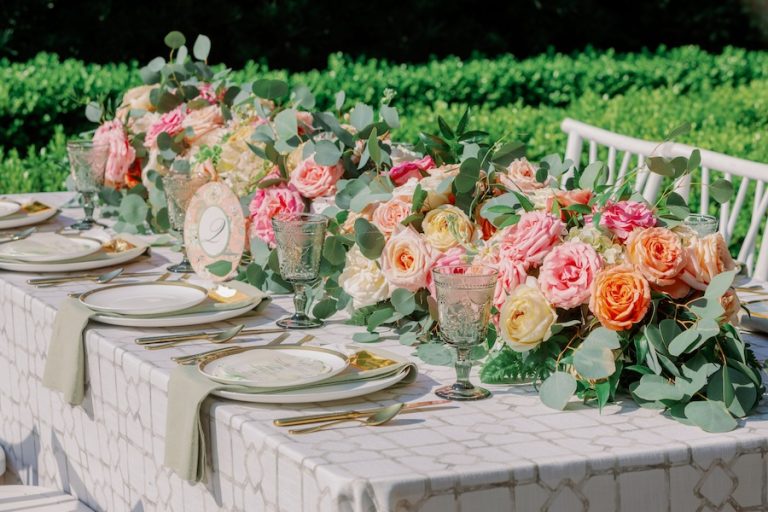The ceremony
Your vows take center stage. Make every moment count.
All eyes are on you. The ceremony is the heart of the wedding day, the reason everyone’s gathered. It’s your moment to pause, reflect and declare your love in front of the people who matter most. Whether you’re going full traditional or adding your own flair, a little planning goes a long way to making it seamless, heartfelt and unforgettable.
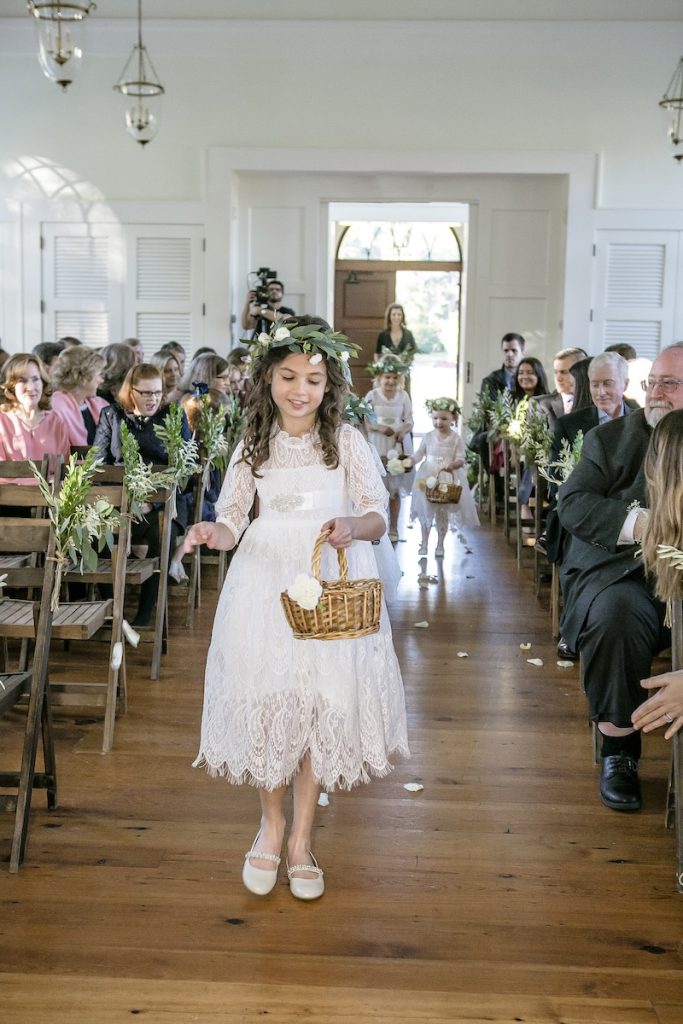
Guest arrival and seating
Guests should begin arriving about 30 minutes before the scheduled start. Assign ushers or attendants to greet and guide guests to their seats. If you’re having “bride” and “groom” sides, now’s the time to decide how that works, or skip it altogether for a more modern feel.
Pro tip: Provide a welcome table with programs, tissues, water or fans if it’s hot. A few thoughtful touches can make guests feel comfortable and included from the start.
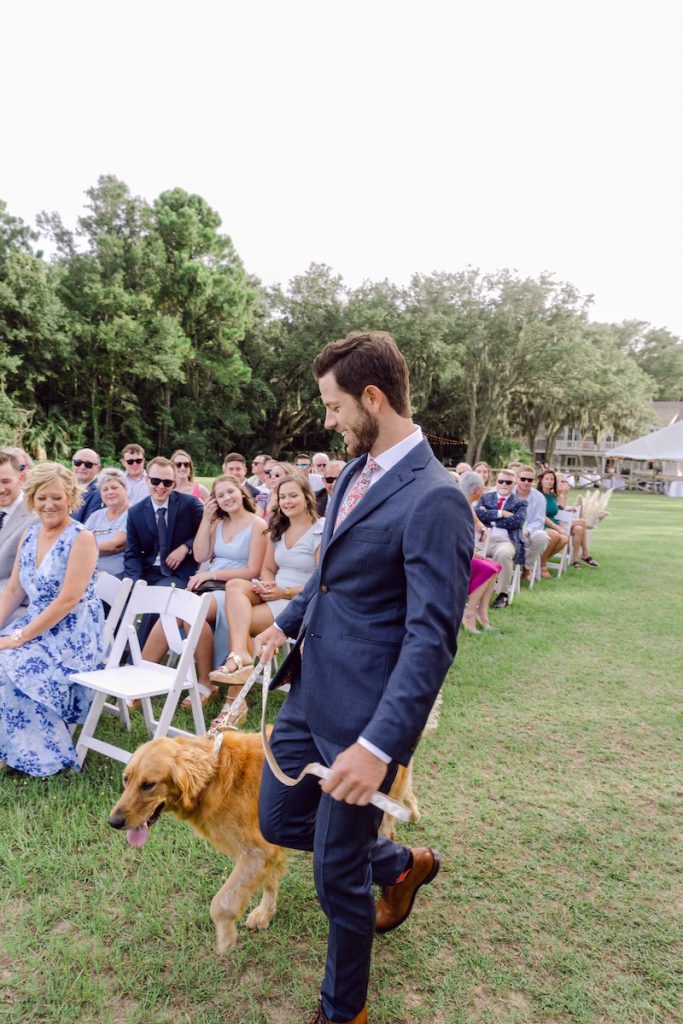
Prelude music
As guests settle in, prelude music sets the mood. Choose soft, instrumental pieces or acoustic covers that reflect your style. This is the first impression. Something calm, romantic and inviting works well.
Bright ideas
- String versions of modern love songs
- Acoustic piano or guitar
- Jazz standards or instrumental film scores
Pro tip: Keep this music going until the processional begins to avoid an awkward silence.
The processional
This is the official start. The order can vary, but here’s a common structure:
- Officiant takes their place
- Groom and best man (walk in or enter from the side)
- Bridal party (maid of honor last)
- Ring bearer and flower girl
- Bride’s entrance (typically escorted by a parent or loved one)
Pro tip: This is a great place to personalize. Switch up the order, walk down together, or include special people (like grandparents).
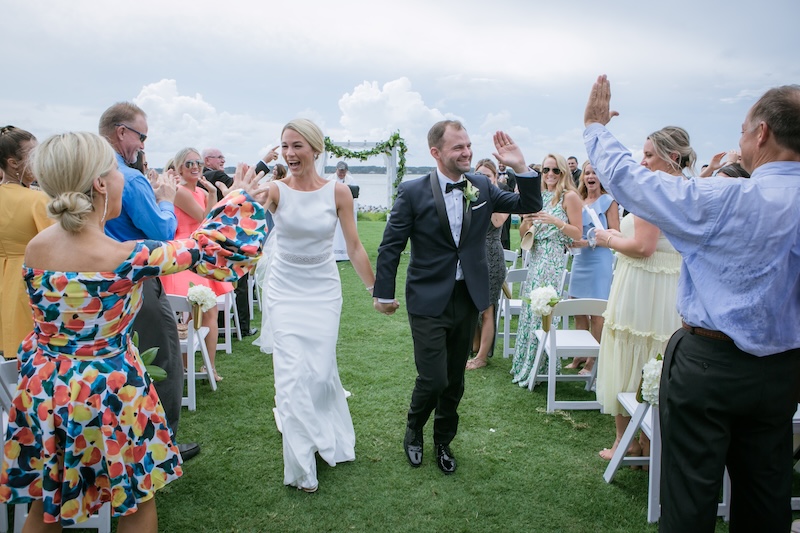
Bride’s entrance
Cue the music shift. When the bride appears, emotions rise. The walk can feel like a blur, but it’s one of the most powerful moments of the day. Make eye contact with your partner, breathe deeply and take it all in. The song choice matters. Whether it’s the classic “Canon in D” or a modern ballad, pick something that speaks to your relationship.
Opening remarks
Once everyone is in place, your officiant sets the tone. This welcome can be spiritual, humorous, poetic; whatever fits your personalities and the mood of the day.
Tips for your officiant:
- Introduce yourselves for guests who may not know your story
- Keep remarks short and heartfelt
- Add a personal anecdote to create intimacy
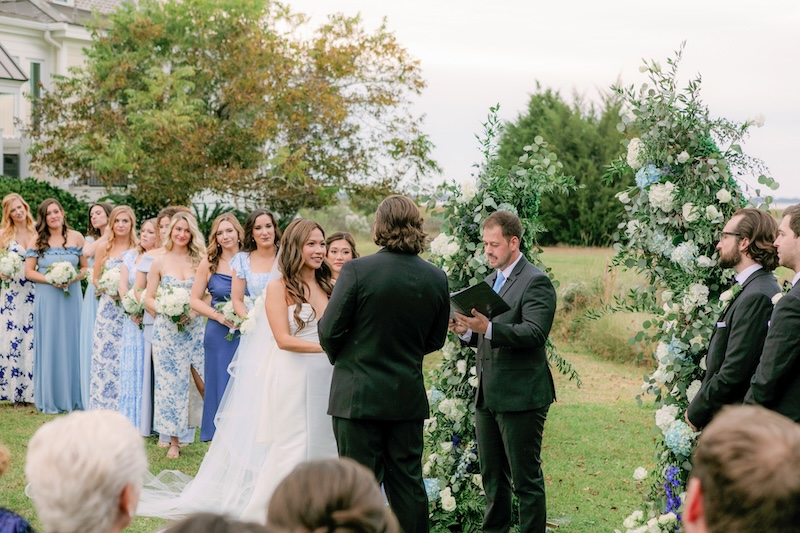
Readings and rituals
Incorporate readings, prayers or symbolic acts like a unity candle, sand ceremony or wine blending. Invite family or friends to read meaningful passages (religious or not) that reflect your values.
Bright ideas
- Favorite book excerpt or poem
- Lyrics from a meaningful song
- Cultural or family traditions
Pro tip: Keep it to one or two selections to maintain flow.
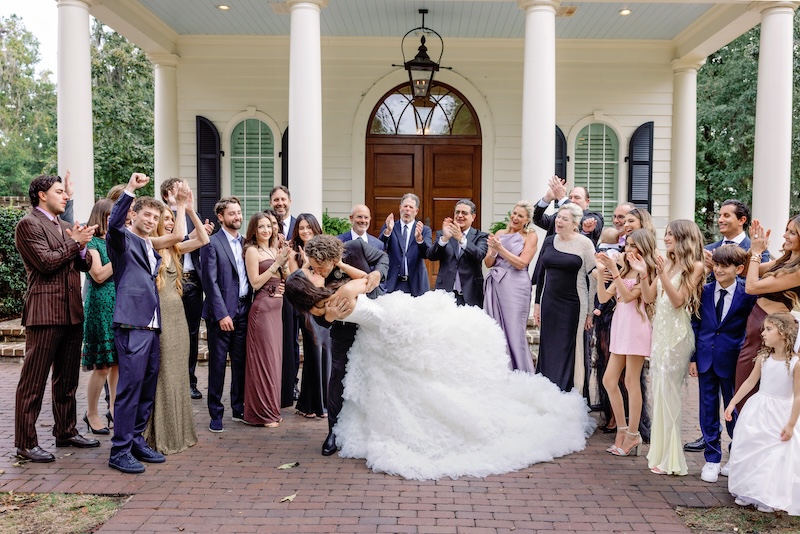
Exchange of vows and rings
This is the heart of the ceremony. You can write your own vows, use traditional ones or combine both. Just speak from the heart. After the vows, exchange rings as a physical symbol of your promises. Your officiant can guide this with simple wording or a personalized message. Don’t rush. Speak slowly, look at each other and let the moment settle in.
The first kiss
Your officiant will cue the moment everyone’s waiting for. Whether it’s sweet and short or full-on dramatic, let it reflect your personalities. After the kiss, your officiant can announce you as newlyweds, and just like that, you’re officially married. Have a high-energy recessional song ready for your walk back up the aisle. It sets a joyful tone and kicks off the celebration.
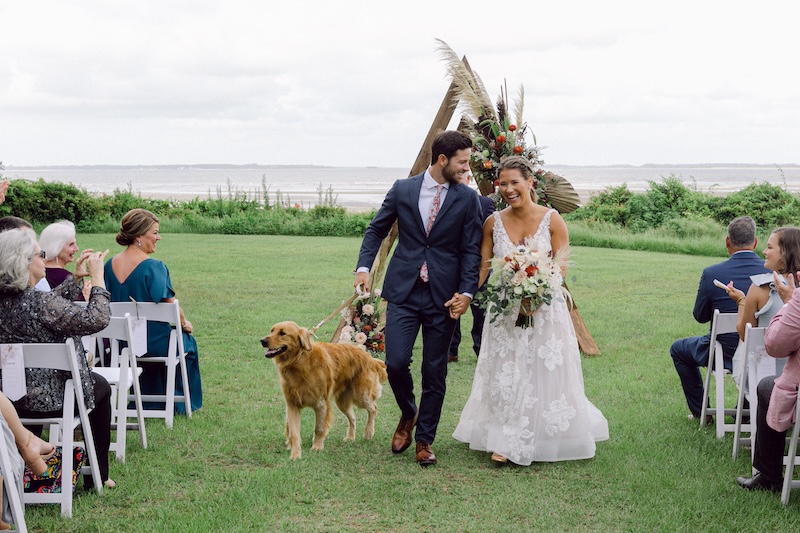
Suggested ceremony start times
Traditional church wedding
Start time: 2-4 p.m.
Why it works: Allows for a mid-afternoon ceremony, followed by a cocktail hour and evening reception. Many churches have set times, so plan around availability.
Outdoor garden wedding
Start time: Golden hour (Spring, 5:30-6:30 p.m.; Summer, 6-7 p.m.; Fall, 4:30-5:30 p.m., Winter, 4-5 p.m.)
Why it works: Takes advantage of golden hour light for stunning photos and cooler temperatures. Guests enjoy a gradual transition into evening festivities.
Beach wedding
Start time: Golden hour (Spring, 5:30-6:30 p.m.; Summer, 6-7 p.m.; Fall, 4:30-5:30 p.m., Winter, 4-5 p.m.)
Why it works: Sunset ceremonies are popular for a reason: dramatic skies, romantic lighting and great vibes. Confirm tide charts and lighting for photos.
Morning brunch wedding
Start time: 10-11 a.m.
Why it works: Ideal for early birds and more casual affairs. Bonus: venues and catering may cost less during daytime hours.
Evening or candlelit wedding
Start time: After dark (Spring, 6:30-7:30 p.m.; Summer: 7-8 p.m., Fall: 6-6:30 p.m., Winter: 5:30-6 p.m.)
Why it works: Sets a romantic, dramatic mood. Works well for formal weddings and elegant indoor venues.
Pro tip: Work backward from your reception time, factoring in ceremony length (typically 20-30 minutes), photos and any travel between locations. Always build in buffer time. Weddings rarely start exactly on the dot.

